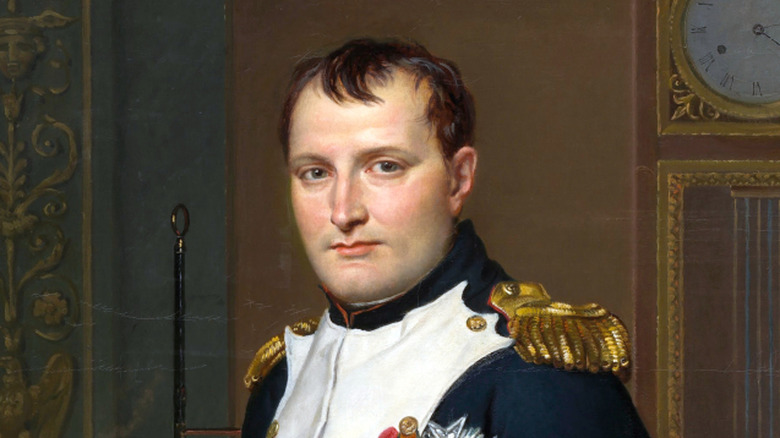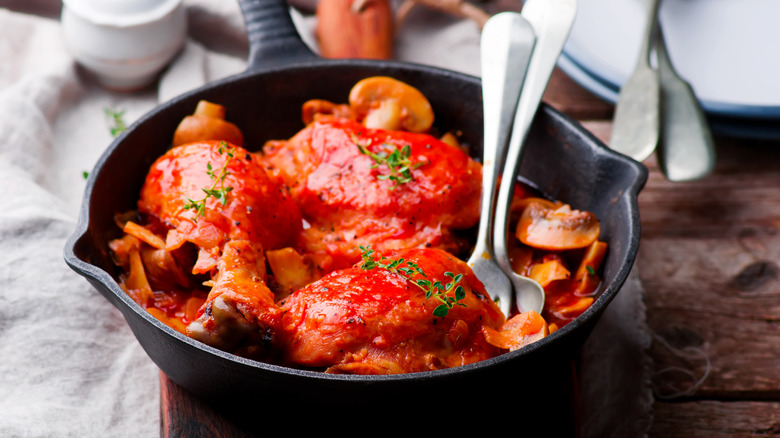How Napoleon Helped Make The Rotisserie Chicken A Grocery Staple
Napoleon Bonaparte may or may not have said, "An army marches on its stomach" (the aphorism is also attributed to Frederick the Great), but there were numerous instances where his own troops were running on empty. At times, they had to resort to eating their horses, which is something even the most dedicated reenactors can't emulate, since horsemeat is now illegal to purchase in the U.S. There were even rumors of cannibalism on the retreat from Russia as the 1812 March on Moscow ended in disaster. (Needless to say, this is also a no-go for reenactors.) Napoleon himself, however, didn't miss many meals, and one of his favorites was spit-roasted chicken. Kitchen staff at his Paris palace were kept busy cooking a constant supply of them, and he was known to wrap them in paper and take them along on campaign.
Napoleon and his cooks certainly didn't invent the rotisserie chicken — a 14th-century British manuscript shows an illustration of chickens roasting on a spit, and this cooking technique was introduced to France around 1450. Nor can we draw a direct line between Napoleon's fondness for spit-roasted chickens and the adoption of this staple by Costco and other grocery store chains nearly two centuries later. The rotisserie chicken seems to have remained somewhat of a niche product until it gained popularity in Peru in the 1950s, and it was introduced as a restaurant concept in the U.S. by Boston Market in the mid-1980s and Kenny Rogers Roasters in the early 1990s. Still, if there were ever to be a rotisserie chicken hall of fame, Napoleon would surely deserve to be inducted into the "famous fans" wing. (Or breast, or thigh.)
Other foods associated with the first French emperor
Le Petit Caporal, quite the rockstar in his day, remains a major figure long after his death. Several foods still bear his name, including a type of cognac and a multi-layered flaky pastry, even though neither item is directly connected with the man. Chicken Marengo, however, does have such a link, as was created by one of Napoleon's chefs who was tasked with cooking up a celebration dinner after a successful Italian battle. He had no time to spit-roast a chicken, so instead, the unfortunate fowl was cut into pieces and fried in oil along with locally sourced (or swiped) tomatoes and onions.
Napoleon might also be considered the father of canned food in some way. He didn't invent the stuff, but he did offer 12,000 francs to anyone who could come up with a better method of food preservation. Nicolas François Appert, the man who eventually claimed the prize, suggested that foods be boiled and sealed in airtight jars, which is something home canners are still doing today.
Yet another food — pumpernickel bread, which can be used to make tasty cocktail rye sandwiches — is said to have been named after Napoleon's horse, evolving from the words "pain pour Nicol" (this being the horse's moniker). This is false etymology, however, since pumpernickel is German and the word translates to something along the lines of "Satan's farts." ("Pumpf" is German slang for passing gas, while "Nickel" is a nickname for the devil.) Judging by how some Germans felt about Napoleon, though, the name might well have been applied to the man, if not his mount.

